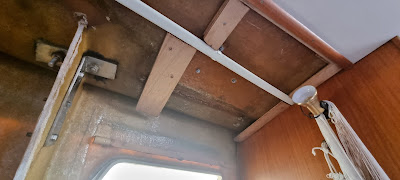Introduction:
The world of sailing is filled with iconic vessels, each with its own unique history and charm. The Oyster 39, built by Landamore's in Wroxham, Norfolk, and designed by Holman & Pye, is one such yacht that has earned its place in the hearts of sailors and enthusiasts alike. In this blog post, we will delve into the rich history and features of the Oyster 39, a yacht renowned for its exceptional accommodation and legendary durability.
A Legacy of Excellence:
The Oyster 39 has been revered for its remarkable live-aboard capabilities, making it a standout choice among yachts in its class. Designed with an emphasis on comfort and functionality, this vessel has been a popular choice for those seeking extended adventures on the high seas.
Notable Expeditions:
One of the most famous Oyster 39s, "Morningtown," became a household name during the 1979 Fastnet storm. Serving as a radio relay vessel, Morningtown braved the tempestuous seas and remained at sea, without incident, during one of the UK's most severe weather events. This incredible feat is a testament to the yacht's robust construction and seaworthiness.
Accommodation and Comfort:
One of the standout features of the Oyster 39 is its exceptional accommodation for a yacht of its size. The well-thought-out interior layout provides ample space for living aboard, making it an ideal choice for those looking to spend extended periods at sea. Whether you're planning a long-distance cruise or simply enjoying a weekend getaway, the Oyster 39 offers a comfortable and inviting living space.
Timeless Design:
The design by Holman & Pye has stood the test of time, and the Oyster 39 continues to capture the imagination of sailors today. With its graceful lines and classic profile, this yacht exudes a timeless elegance that never goes out of style.
 |
Conclusion:
The Oyster 39, with its outstanding accommodation, historical significance, and enduring design, remains a beloved choice among live-aboard yacht enthusiasts. Whether you're drawn to its storied past, its enduring elegance, or its practicality as a home on the water, the Oyster 39 is a vessel that continues to captivate sailors and adventurers, embodying the spirit of seafaring excellence.















